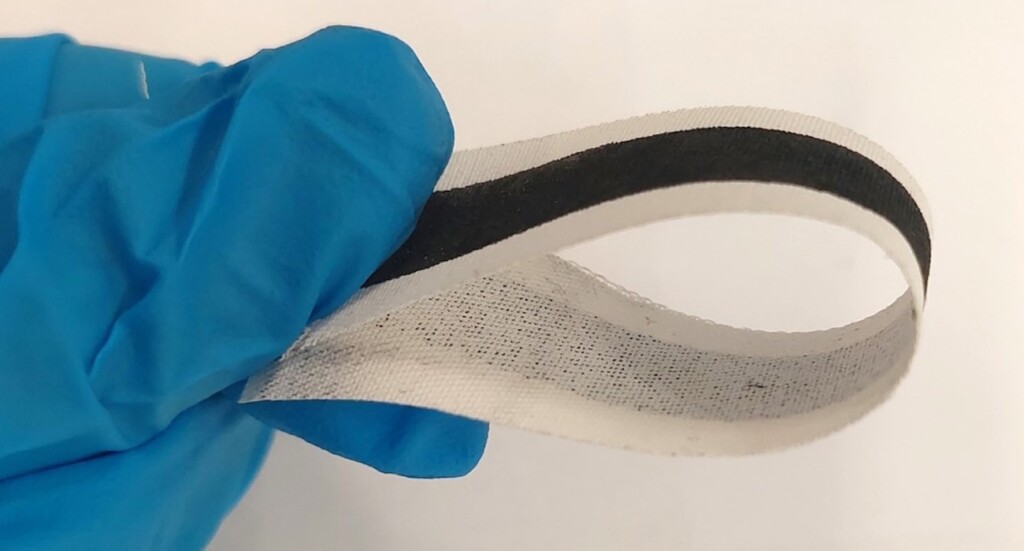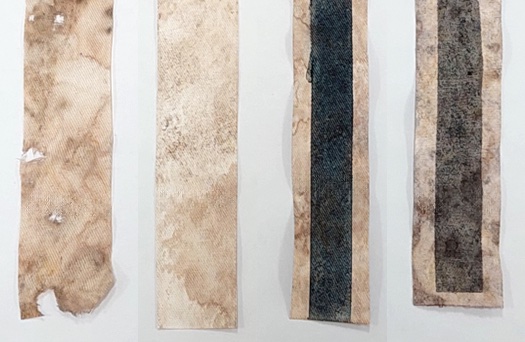

Wearable electronic textiles can be both durable and biodegradable, according to a new study.
A research team led by the University of Southampton and UWE Bristol in the UK has tested a new sustainable approach for fully inkjet-printed, eco-friendly e-textiles.
Appointed SOFT— for smart, wearable and environmentally friendly e-textiles — the new “fabric” has been described in the published results in the journal Energy and Environmental Materials.
Electronic textiles are those that integrate electrical components, such as sensors, batteries or lights. They can be used in fashion, for performance sportswear, or for medical purposes as clothing to monitor people’s vital signs.
These textiles must be durable, safe to wear and comfortable, but also, in an industry increasingly concerned about clothing waste, they must be environmentally friendly when no longer in use.
“The integration of electrical components into conventional textiles complicates the recycling of the material because it often contains metals, such as silver, which do not biodegrade easily. » explained Professor Nazmul Karim at the University of Southampton.
“Our eco-friendly approach to sustainable material selection and manufacturing overcomes this problem, allowing the fabric to break down when discarded.”
The team’s design has three layers, a sensing layer, a sensor interface layer, and a base fabric. It uses a textile called Tencel for the base, which is made from renewable and biodegradable wood.
The active electronics of the design are made of graphene and a polymer called PEDOT:PSS. These conductive materials are precisely inkjet printed onto fabric.
The research team, made up of members from the universities of Exeter, Cambridge, Leeds and Bath, tested samples of the material for continuous heart rate monitoring. Five volunteers were connected to monitoring equipment, attached to the gloves worn by the participants. The results confirmed that the material can effectively and reliably measure both heart rate and temperature at industry standard levels.

“Achieving reliable, industry-standard monitoring with environmentally friendly materials is an important step,” said Dr Shaila Afroj, Associate Professor of Sustainable Materials at the University of Exeter and co- author of the study. “This demonstrates that sustainability should not come at the expense of functionality, especially in critical applications like healthcare. »
The project team then buried the e-textiles in the ground to measure their biodegradable properties.
After four months, the fabric had lost 48 percent of its weight and 98 percent of its strength, suggesting relatively rapid and also efficient decomposition.
Additionally, a life cycle assessment revealed that graphene-based electrodes had up to 40 times less environmental impact than standard electrodes.

Marzia Dulal from UWE Bristol, first author of the study, highlighted the environmental impact: “Our life cycle analysis shows that graphene-based e-textiles have a fraction of the environmental footprint compared to traditional electronics. This makes it a more responsible choice for industries seeking to reduce their ecological impact.
The inkjet printing process also provides a more sustainable approach to manufacturing e-textiles, depositing an exact number of functional materials onto textiles as needed, with almost no material waste and less energy consumption. water and energy than conventional screen printing.
“These materials will become more and more important in our lives,” concluded Professor Karim, who hopes to advance with the team in the design of wearable clothing in SWEET, particularly in the area of early detection and prevention of diseases cardiac.
DON’T BURY THIS STORY – Share it on social media…






